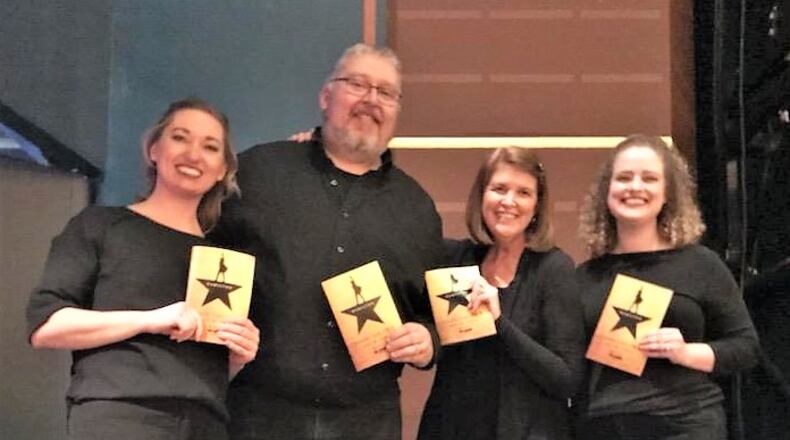The Pulitzer Prize-winning musical has over 20,000 words crammed into two and a half hours, nearly four times that of the average Broadway musical, according to an analysis from fivethirtyeight.com. By comparison, ‘The Phantom of the Opera,’ the longest running musical in Broadway history, has a little less than 6,800 words.
Lee was tasked with signing for the tracks ‘Guns and Ships’ and ‘Satisfied,’ and said she didn’t sleep for three days.
‘Guns and Ships,’ sung by the Marquis de Lafayette (portrayed in Dayton by Warren Egypt Franklin) holds the record for the fastest song in Broadway history at 6.3 words per second at its fastest verse. ‘Satisfied,’ also from Hamilton, is third fastest at 5.0, according to fivethirtyeight.com.
Lee said she worked with a “uniquely incredible” team of interpreters for ‘Hamilton,’ including those that tested positive for COVID, gained their insights, and looked at other ASL variations of the music online.
“Those interpreters had been training for months, putting their heart and soul into it,” Lee said of her colleagues. “They had to step away from it, but they also helped us a lot.”
An interpreter’s job isn’t to translate every sentence word for word. Lee said American Sign Language is its own language, not a one-to-one comparison from English, and the interpreter’s job is to convey the essence of what is being said, provide context, and to convey the rhythm and expression of the music in a visual medium.
“That’s the goal — for what I’m doing to match what’s happening on stage,” Lee said.
Lee further emphasized that the focus of her work is always on those that she and her colleagues serve.
“This kind of attention is not what interpreters get usually,” Lee said. “What we’re doing — what we should be providing — is access. It’s about the patrons who are deaf. They are who we work for, one thousand percent.”
Fairborn High School’s American Sign Language program has doubled in size in the last year. Lee and a second full-time teacher instruct over 200 students in ASL programs from 9th through 12th grade.
Fairborn’s third-year ASL classes meet weekly with primary school students to teach them some basic sign language, and students have made QR codes posted near bathrooms and other spaces, linked to videos of students showing how to sign the names of those rooms.
Students have also worked with local first responders, providing them with an “interactive notebook” that emergency responders can reference to assist someone who is deaf before an interpreter arrives on scene.
“That was the kids’ idea,” Lee said. “I’m excited to see how they’re growing and evolving with it all. The students are loving it, and learning.”
About the Author

